How to Get Poop Off Baby Parakeets Feet
If you've recently decided to become a pet bird parent, a pair of parakeets might be the right choice. But before you make this decision, you should become acquainted with the basics of parakeet care. Today's post contains all the tips you might need to keep your birds happy and healthy for as long as possible.

Table of contets
- Devotion and attention
- Choosing a parakeet
- Diet
- Housing
- Health
- Maintenance
- Handling
- Keeping parakeets happy
Birds require devotion and attention
Are parakeets good pets for everyone? Not exactly. If you don't have enough time to tend to their needs, this might not be the best moment to assume this responsibility.
Owning a parakeet involves a lot of attention and devotion, and you must have a budget for it, too. Finding out how to take care of parakeets also involves a learning curve.
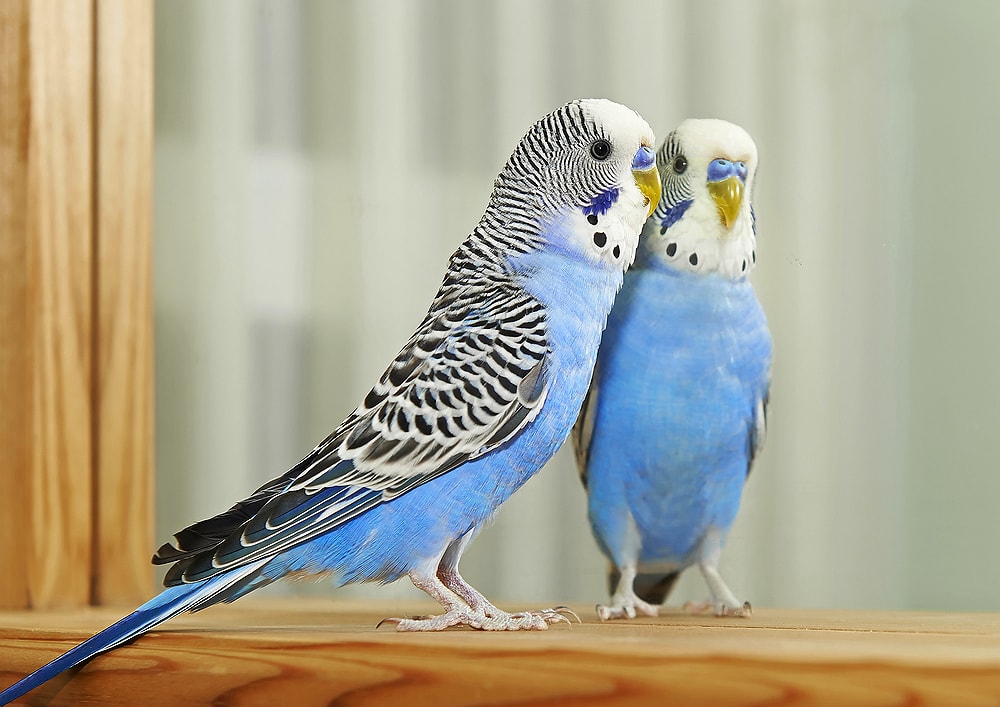
If you didn't know, parakeets could live for up to ten years, which means that getting a pair is a long-term commitment. The lifespan of parakeet birds can sometimes even go up to 15 years.
Besides making sure that the birds have food and housing, you'll also have to take them to the vet once in a while. If you are happy to take on this responsibility, we'll share our knowledge on properly taking care of your budgies in the paragraphs below.
Choosing a parakeet
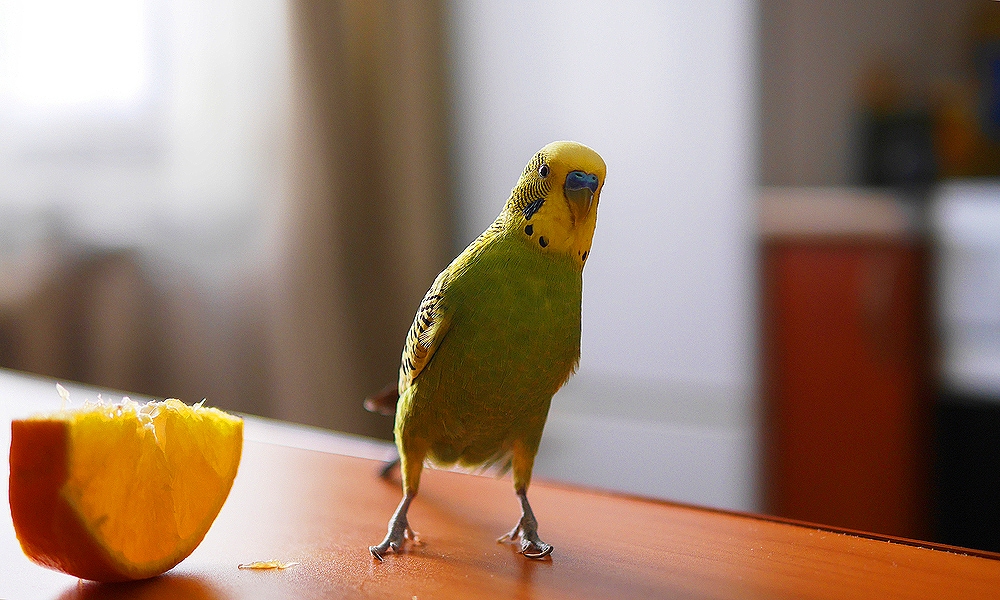
Find the right breed
Did you know that there are more than 100 types of parakeets in the world?
The most commonly encountered type of parakeet is the budgerigar, which is native to Australia. Budgies are low-maintenance pet birds compared to other types of parakeets.
If you want to pick a different type, first find out how much is a parakeet at your local pet shop or breeders. The rarer they are, the more they cost.
Getting a pet bird from a reputable pet store, such as Petco or Petsmart, can prevent you from having to treat your parakeets for various medical problems later on.
If you choose a breeder, make sure that they have an excellent reputation for keeping healthy birds.
Find the right birds
When choosing your parakeet pair from the store or the breeder, make sure that they are bright-eyed and lively.
They shouldn't be dirty or have missing feathers, either. Look at the housing the budgies were kept in, too, as it can give you a clue as to whether they were kept in good condition.
The budgerigars shouldn't have any abnormalities or growths, either, and they should be clear of mites. Their toes should be in pristine condition since they spend all day long standing on their feet.
Picking young budgies instead of older ones can be a great idea if you want to train them.
Buy a pair of parakeets
The budgie personality is a very social one, which means that they always have to have a companion, whether that be another bird or a human friend.
Since it is practically impossible for people to be at their parakeet's side all the time, it's highly recommended that you get two budgies instead of one.
You can get more budgerigars if you want, but they should come from the same group. If they are introduced later on, there can be conflicts between them. Parakeets that were raised together often get along better than those that were raised separately.
Keeping more parakeets than you can handle means that you'll have to clean their cage more often, give them more food, and also break up any conflicts if they appear. (1) Two or three is usually the best number that most people can take care of.
Related: How Much Does a Parakeet Cost? (+Monthly Expenses)
Diet
Caring for parakeets also means knowing what you should feed them. People who do not do enough research on this might risk feeding them an all-seed or all-pellet diet, which can be unhealthy.
Parakeets need a varied diet to thrive. There are also foods that you should never give them as they risk causing intoxication and even being lethal.
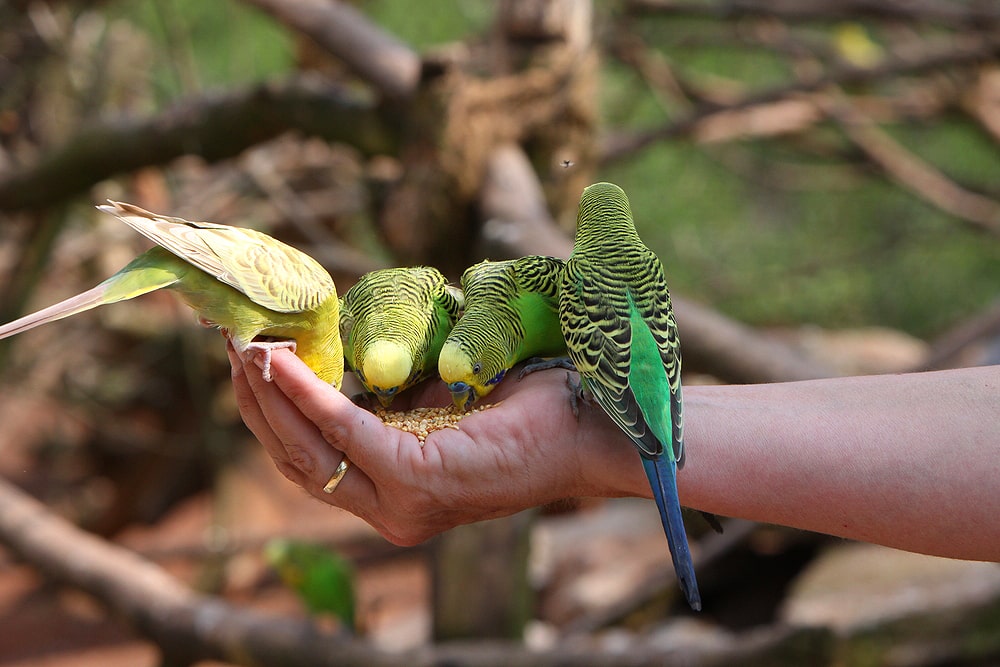
The seeds of some fruit can contain toxins, too. Other concerns range from you feeding them moldy nuts by accident to giving them human food that does not address their needs and could endanger their health. Here's everything you should know.
What do parakeets eat?
What do parakeets eat? A standard parakeet diet should consist of pellets, seeds, vegetables, fruits, nuts, and treats.
While seeds and pellets should make up a big portion of their diet, they should be fed small amounts of legumes, veggies, and fruits every day.
When it comes to what seeds you can give them, they range from safflower and groat to white sunflower and canary seed. Pellets are made to mimic seeds, and they are often mixed with them so that they provide the nutrients of both grains and seeds.
Fruits have a somewhat high sugar content, which means that you should feed them to your parakeets only two or three times a week. Vegetables are to be fed every day as they are healthier.
Some safe fruits range from banana and apricot to peach, apple (without the seeds), and fresh berries. Healthy vegetables range from tomato and cucumber to carrot, zucchini, and asparagus.
Legumes can add a healthy amount of protein to a parakeet's diet, so you can feed them small amounts of cooked beans and peas. (2)
The best selection of parakeet foods, treats, and toys can be found from Chewy. PS! You can save 30% on all supplies with your first Autoship, so check them out!
Foods to avoid
What should I feed a parakeet if there's no budgie food left in the house? While bread might be the first thing that could cross your mind, it's actually not the best choice.
Sandwich bread has a number of preservatives and additives and even sugar, so it is unsuitable for parakeets.
Other foods can be particularly toxic to parakeets. Here is a shortlist. (3)
- Yucca
- Mushrooms
- Chocolate
- Tomato leaves and stems
- Avocados
- Raw peanuts
- Uncooked beans
The seeds and pits of most fruits (including apples)
Caffeinated beverages, alcohol, junk food, or any type of food that could contain too much sugar or salt are a no-go, too.
While the majority of the fruits and vegetables that people eat are considered to be safe and healthy, they might have been exposed to dangerous amounts of pesticides and could be risky for parakeets.
They might be on the so-called 'dirty dozen' list (4), which even includes spinach and strawberries, that you'd otherwise be able to feed to budgies.
Treats
Budgie care involves giving your parakeets treats once in a while.
It's a good idea to give your pet birds treats only on occasion because they aren't the healthiest food choice of all.
They can contain too many seeds for the recommended amount that a parakeet should receive on a daily basis or they could contain honey, which is rich in sugar.
Some safe parakeet treats that you can get from Chewy.com, for example, are treat sticks and spray millet.
Even mealworms can be used as treats every now and then since they contain a healthy dose of protein, but they should only be fed in small quantities.
Given their sugar content, fruits can be used as treats, especially since you are not supposed to feed them to your budgies more often than 2-3 times a week.
So, you can find a fruit that your parakeets love and use it as a treat instead of a commercial one.
Related: 10 Parakeet Treats to Make Your Birds Happy
Water
To be healthy, budgies need clean water at their disposal all the time. This means that you should change your pet birds' water at least once a day.
If you do not use a waterer and you have a small dish, you might actually have to change it three to four times a day, since bird poop can get into it by accident.
On the other hand, if you get a waterer, you can rest assured that the water remains clean until you change it.
What type of water is safe? Tap water can be used if it is known to come from a clean source, but many pet bird parents say that it contains too many minerals if it's classified as 'hard water'. (5)
To solve this problem, you can give them filtered or bottled water.
Housing
Providing the right home for your budgie pair is essential for both their safety and their health and happiness. Your parakeets are going to spend most of their time inside their cage, so it needs to be as spacious as possible.
Place the cage in a safe, warm, and active room, but don't keep it right next to the window as budgies can easily get too hot or cold.
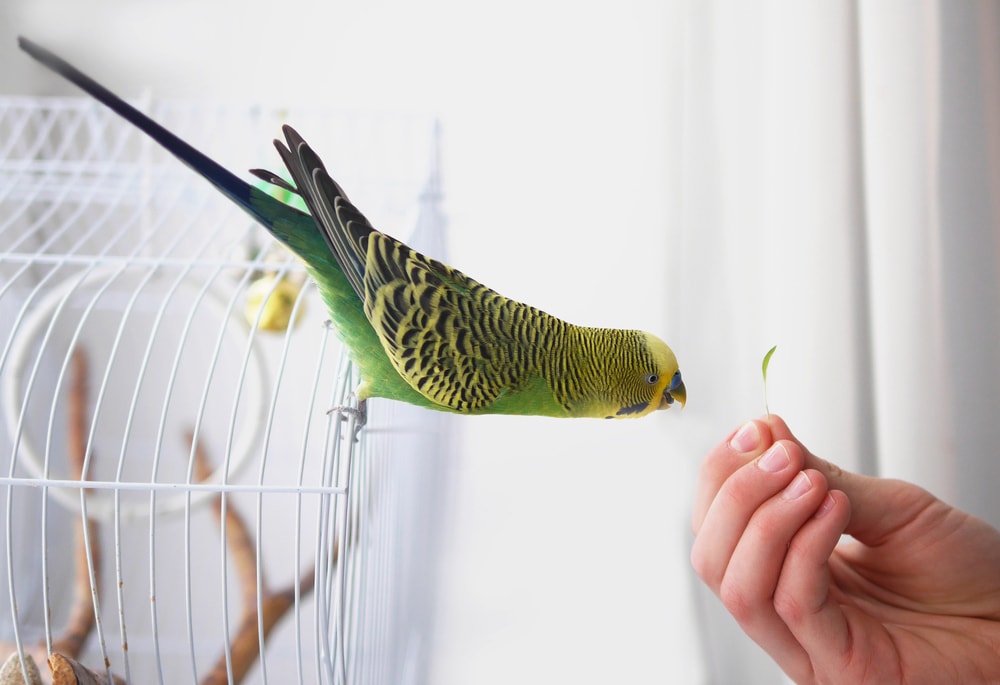
Every once in awhile, you might take your parakeets out of the cage, either to take them to the vet or to let them enjoy a bit more freedom. Make sure that you release them in a safe environment that doesn't risk hurting them.
Cage
The parakeet house has to provide your pet birds with enough space for them to feel at ease. One parakeet needs a cage that measures at least 18 by 14 by 22 inches. If you can afford a bigger cage, get it, since it will maximize your bird's comfort level.
Double the size if you get a pair of parakeets instead of just one bird. The cage bars should be closely spaced as there have been cases in the past of budgies catching their bodies in-between the bars.
Moreover, the cage has to be made of safe materials as parakeets use their beaks to climb on the bars. The last thing you'd want would be for your pet birds to accidentally ingest zinc or lead, as both of these are toxic to them.
Bamboo cages are not a good choice, either, since parakeets are known to be able to chew through them and escape.
Related: 12 Best Parakeet Cages (Flight, Travel & Playtop Options)
Cage accessories
When it comes to regular or fancy parakeet care, a number of accessories are a must and others; you can do without. Here is a list of products that you could get from Chewy.com and that are necessary for all parakeet cages.
- At least 3 perches for your budgie to stand on
- A swing (which is similar to a perch, but it moves, and it provides your bird with entertainment)
- 2 metal food bowls
- 1 or 2 waterers
- A cuttlebone
- Bedding
If you want to keep your birdcage as clean as possible, you can consider getting a birdcage skirt. This will at least keep part of the bedding and waste inside the cage, with you being able to slide the tray out and clean it with ease.
A coconut ladder hut house can be a great addition, too, since it both provides a safe hiding place for when your budgies need to rest, and the stairs make it rather entertaining, at the same time.
No matter the type or number of accessories you get, make sure they are made from materials that are marketed as being safe for parakeets.
Toys
Learning how to take care of a parakeet also means understanding that they can get bored if they don't have any means of entertainment.
But what types of toys do budgies like the most? Here's a short list of some that you can get from Chewy.com and that are fun for them.
- Shredding toys
- Chewing toys
- Foraging toys
- Bell toys
- Climbing toys
When picking budgie toys, consider their social nature. If you can only keep one budgie, give it a friend by adding a mirror to their living environment. Another option would be to get a plastic budgerigar that you can clip onto a perch or the bars of the cage.
Pick toys that are as colorful as possible as birds are capable of seeing the full spectrum of colors and even beyond what people are able to see.
Change the toys occasionally or rotate them on a week-by-week basis so that your budgies never get bored of them.
Related: 12 Best Toys for Parakeets to Keep em' Happy
Health
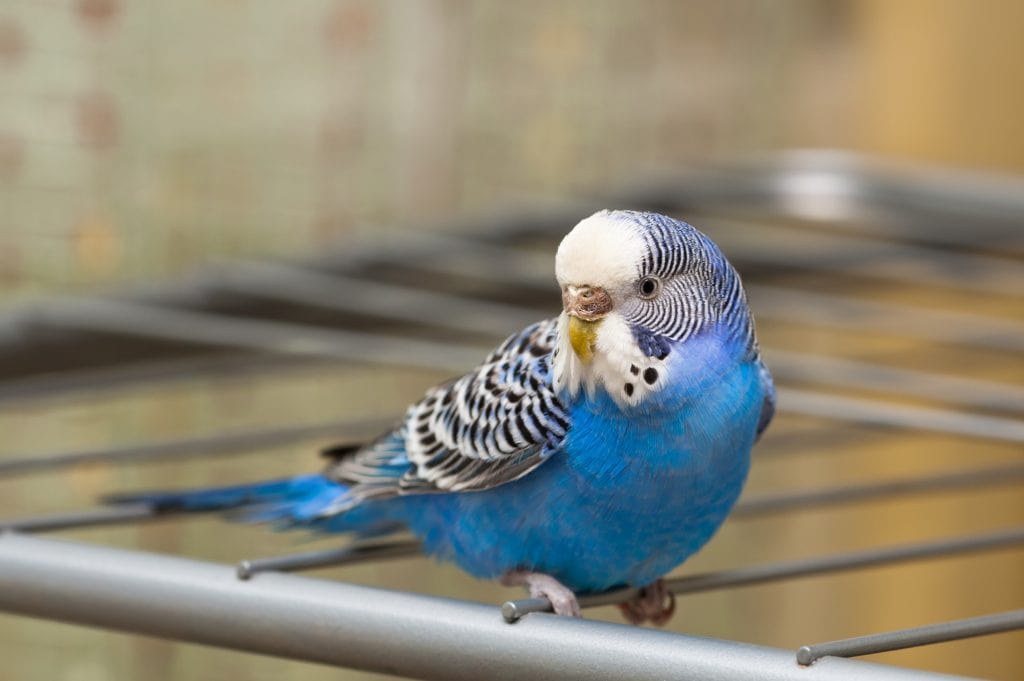
Signs of a healthy animal
Healthy parakeets have a good appetite, particularly in the morning. If the bird loses its appetite, it might be a sign that something is wrong health-wise. Moreover, budgies are active and acrobatic, and they don't remain unresponsive or calm for too long.
A healthy parakeet spends some time grooming themselves and their pair every day. Their feathers have to look good, be smooth, and ordered, and there shouldn't be any missing. A healthy budgie's grooming habits shouldn't fluctuate. (6)
Since budgies' feet are prone to several diseases, you should keep an eye on their claws and feet. They should be clean, without any encrustation, and their claws shouldn't be overly long, either.
When it comes to the parakeet temperature, you should know that it is physiologically between 102 and 112 degrees Fahrenheit. Birds can have a fever just like other animals, so if you notice that your budgie is lethargic and feels too warm when you hold it, it might be sick.
Here are several other signs of a healthy parakeet.
- An even flight
- A waxy cere
- A firm and intact beak
- Firm droppings
Related:
Parakeet: The Ultimate Guide
Cockatiel: The Ultimate Guide
Medical needs
Do parakeets need to go to the vet? Yes, and on a regular basis. A parakeet's nails and wings have to be trimmed so as to make the taming process easier. Trimming your pet bird's nails is necessary every 1-2 months, depending on how fast they grow.
However, both of these services should be performed by a veterinarian, not by the pet parent themselves. (7)
The reason for this is that budgies are small birds, and they don't have a lot of blood in their bodies. If you try to clip your parakeet's nails or wings by yourself and you cause a hemorrhage, there is a chance of you not being able to stop it.
There are breeders out there who have become accustomed with doing this alone without the assistance of a vet, but they were instructed by a veterinary professional in the beginning. If you feel that you are capable of doing this, simply ask your vet to instruct you.
Common diseases
The most important parakeets info you should be aware of are the diseases that most affect them. Knowing the signs will help you prevent them in the future.
Here are the most common health problems that a parakeet or your budgie pair can experience:
- Chlamydiosis
- Feather plucking
- Diarrhea
- Mites
Chlamydiosis in parakeets is an infectious disease that can be passed on from an infected bird to a healthy one. It's characterized by appetite loss, green droppings, conjunctivitis, and nasal discharge.
Feather plucking can be either a result of boredom or a sign that your parakeets' diet is lacking something essential, such as minerals.
Diarrhea can show up whenever the budgies have consumed something that has upset their stomach, but it can also be a result of food poisoning.
Mites can be common in some parakeets that live in unsanitary conditions in pet shops. In this case, the budgie would have white deposits, particularly on their legs and feet, but sometimes even on their beak or eyes.
In all of these situations, please seek out veterinary care. (8)
Red flags
When it comes to parakeets care, knowing when it's time to take them to the vet can prevent any health condition from worsening. Here are some signs that should give you a clue that your budgies aren't feeling well and that a visit to the vet clinic should happen swiftly.
- Nasal or ocular discharge
- White deposits around the legs and feet
- Lack of appetite
- Red or swollen eyes
- Avoiding to use one foot
- Runny droppings
- Green feces
- Fluffed or soiled feathers
- Coughing or respiratory distress
- Beak swelling
- A lack of a grooming routine
- Avoiding to sit on a perch
If you notice any of these signs in your parakeets, take them to the veterinarian as soon as possible. (9)
Maintenance
The task of caring for your parakeet pair doesn't end once you have bought all the equipment they need. Maintenance should be a big part of your responsibility and it ranges from cleaning the birds' cage to regular visits to the vet.
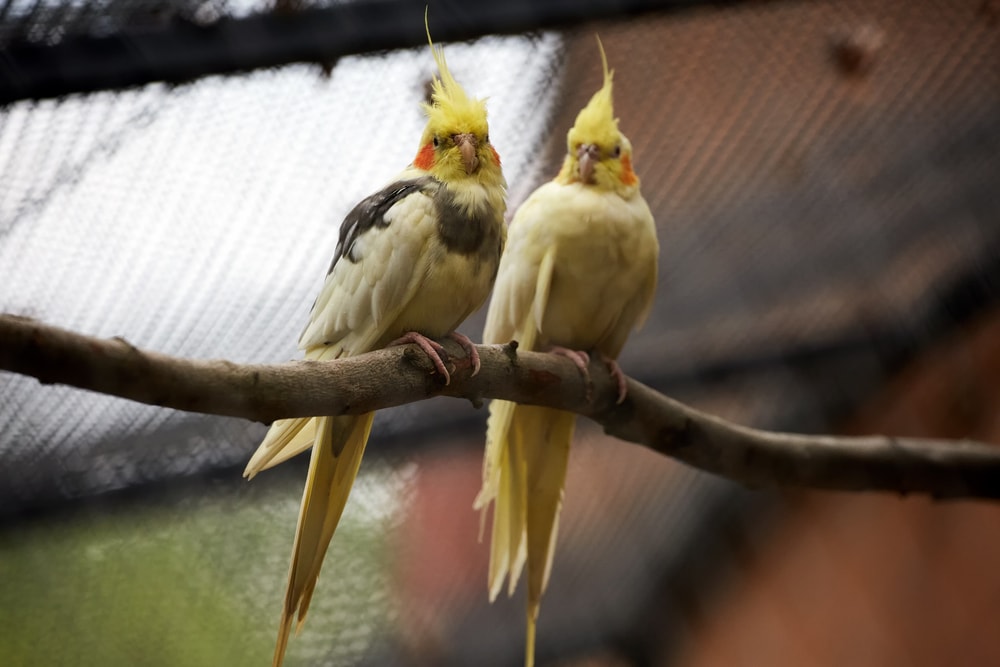
Keeping your budgies' living environment fresh and clean is important as it can prevent them from getting sick. Their droppings contain bacteria and other germs just like those of any other birds or mammals.
Cage cleaning
If you have come across some parakeet information according to which you should clean your pet birds' cage once every couple of weeks or even less frequently, it is incorrect.
You have to clean their housing at least once a week, scrub it down with pet-friendly detergent and wipe it clean with a non-toxic disinfectant. (10)
Once you have disinfected the cage, you need to brush it once again so as to remove any trace of the disinfectant.
The waterers or food bowls, along with the rest of the accessories have to be cleaned in the same way. Even the toys have to be cleaned every week or once every two weeks as they can get soiled, too.
Grooming
All pet parakeets have to be groomed once in a while, but if you have no experience with this, it's always a good idea to ask your vet to show you how.
Once you have learned how to do it yourself, you will need some nail clippers, a styptic powder, and a pair of sharp scissors for the tasks.
Grooming in budgies refers to nail clipping and wing trimming. Fortunately, nowadays, there are perches that make it possible for the nails to be filed down, so you might not even have to trim their nails at all.
Trimming the wings is much more complicated, which is why it's better to have a professional do it if you have no experience.
It has to be performed once the birds have learned how to fly. In general, wing trimming involves two people, with one of them handling the budgie and the other doing the trimming.
Mix up food
Just like every person can get bored of eating the same thing day in and day out, the same can happen to parakeets.
Not only is it good for you to mix things up once in a while to prevent boredom, but you can also use this method to make sure that your budgies are getting all the right nutrients.
While the basis of your budgies' diet should consist of seeds and pellets, it's good to add a cuttlebone, fresh fruit, and veggies, as well as a mineral block to their weekly diet.
If you don't want your parakeets to have any protein deficiencies, you can feed them cooked legumes once every several days. The same can be said about fruits, which should be given once every 3-4 days due to their sugar content.
Don't stick with the same kind of treats, fruits, or veggies, all the time. Budgies love to experiment, and as long as you are feeding them safe food, they will love the variety.
Mix up toys
Once you learn how to care for a parakeet, you'll also need to provide your birds with some variety when it comes to toys.
You can get a generous set on sites like Chewy.com, and some of them come with dozens of different toys that your budgies can try.
Some can love ladders, others can prefer swings or toys that have shiny bells or beads, but there are also birds that will prefer pleasure toys like shredders.
If you get a set that comes with 15 or 20 such toys, it's a good idea to test them out and see which ones are your budgies' favorites.
Create a schedule where you add one or two different toys to their cage every couple of days so that they don't get bored of any.
Visit the vet
Do parakeets need to go to the vet? If you're a newbie when it comes to caring for budgies, it might be a good idea to go to the vet with your pair right after you've purchased it.
The vet will examine them and tell you if the birds are healthy and also give you important information, you might not be able to find online.
As for regular visits, you might have to take your parakeets in for nail clipping and wing trimming.
Not all parakeet parents do this, though, and if you get a perch that files their nails, it will be one less thing to worry about.
For grooming necessities, you will have to take your parakeets to the vet once every couple of months.
Handling
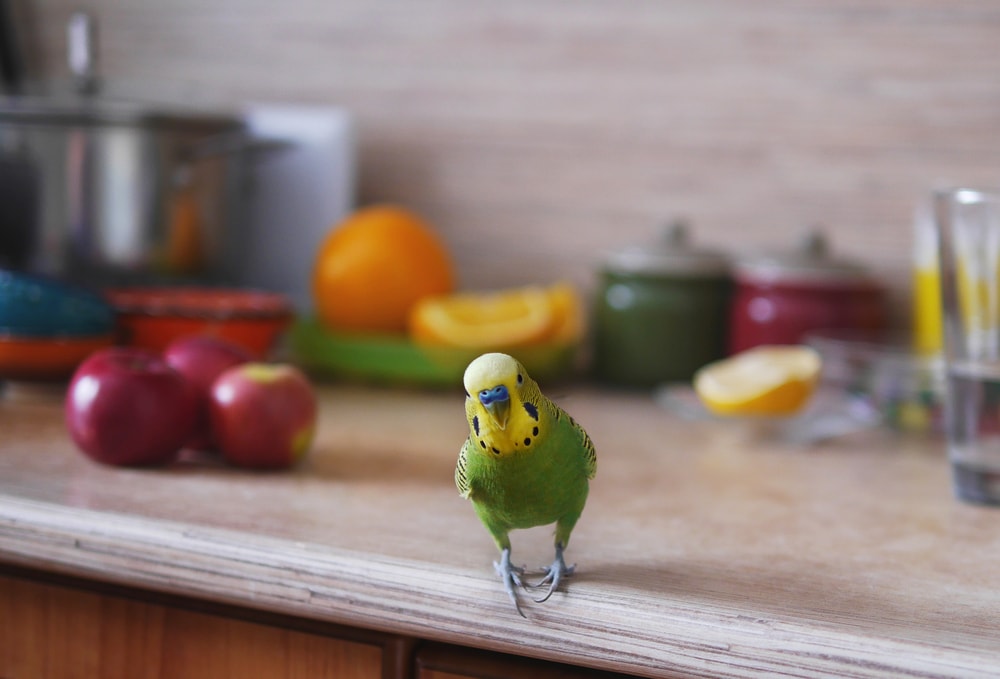
Socialize
Socializing a parakeet takes some time and effort, and the best time to begin this process is when the bird is still young. The budgie needs constant socializing, whether to new people, objects, or places.
Budgies learn the most when they are babies. Their minds begin an imprinting process, which makes it possible for the parakeet to learn as much as possible from their living environment. This happens during the first year of their life.
A parakeet is a social animal, and because of this, it cannot cope for long periods of loneliness. If the bird doesn't get any interaction, whether, from the pet parent or another budgerigar, it will suffer.
Here are some tips for socializing your budgie parakeet.
- Start offering different kinds of foods, especially when they are young
- Move the cage around the house so that they become acquainted with different settings
- Talk to your budgies every morning and every evening or whenever you have some spare time
- Expose your parakeet to various toys and obstacles, especially when you're out of the house
- Leave the TV turned on to entertain the bird
Let them occasionally out of the cage
Every pet bird parent will feel tempted to let their parakeets out of the cage once in a while. But knowing how to care for parakeets when that happens is essential.
Birds have to be allowed to fly only in secured rooms where there is no chance of them escaping.
Pet birds can be harmed by a variety of items inside and outside the house, so the first thing to do is to ensure that there are no open windows or doors in the room you let them fly in.
Here are some other tips for letting your parakeets fly around the house:
- Make sure there are no other pets in that room (cats or dogs)
- Get rid of any plants that might be toxic if ingested by your budgies
- Turn off any fans
- Don't leave any pointed or sharp items in the room
- Remove the blinds as a parakeet can get stuck or tangled into them
- Don't leave any closets or drawers open that might make it impossible for the parakeet to get out (11)
Teach them to speak
Training your parakeets to talk can be challenging and it takes a lot of time. It requires some patience.
Create a calm atmosphere and make sure that your budgies aren't otherwise distracted or anxious. Make sure that the birds are comfortable.
Teaching budgies how to speak should be done particularly in the morning as the birds are well-rested then. Here are a few steps:
- Start with a single and simple word (like their name)
- Reward your parakeet both with verbal praise and a favorite food
- Don't overdo it — a 30-minute daily learning session is usually enough
- Talk with enthusiasm
- Gradually progress from simple words to more complicated ones and then to phrases
- Be patient
Some parakeets can be taught how to speak, whereas others can't. It both depends on the bird, but also the age you have adopted it. Keep your expectations realistic, but never give up. Practice makes perfect.
Sleeping
Keeping parakeets as pets is convenient as they tend to sleep for 10 to 12 hours per day. Most of this happens during the night.
To make sure that your budgies go to sleep, you can cover the cage with a cloth so that their living environment becomes a safe place.
However, if you do this, you need to make sure that the cage is still properly ventilated and that there is enough air going in.
If your budgies tend to be particularly loud at night, covering the cage usually solves the problem and stimulates them to go to sleep.
As for the sleeping behavior of a parakeet, you might notice it during the day, too.
For example, they often take a nap just by closing their eyes, but they can sometimes perch on one foot and give the other one a bit of rest.
Others can tuck their head against a wing.
How to know if your parakeets are happy and healthy?
When you start keeping budgies as pets, you will notice that they are very active. So, a happy parakeet will always be on the go, whether flying, chewing, playing, or climbing on different perches in the cage. If you have a pair, they will also talk to each other rather frequently.
Healthy parakeets also make a number of happy sounds, which can range from chirping to whistling and even downright singing. They will also nibble food throughout the day and sometimes even between play sessions.
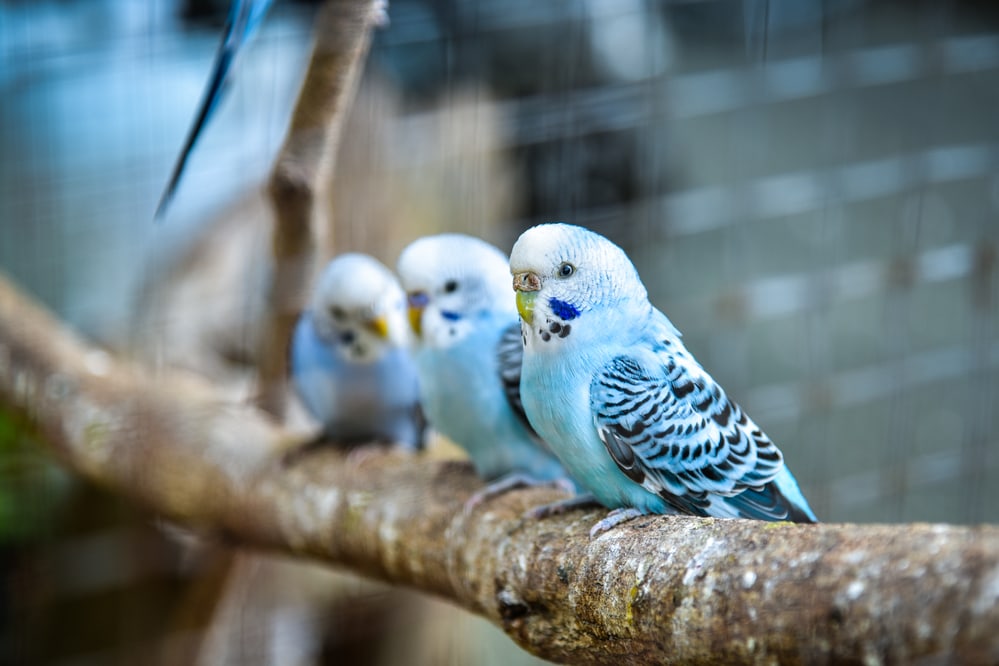
An unhealthy parakeet looks unhappy and will show some changes, such as lethargy, a decrease or lack of appetite, listlessness, vocalizations from a bird that's reasonably quiet, and a bad general appearance, too.
In sick parakeets, you might notice changes in their droppings, the way their feet and beak look or ruffled, messy, or dirty feathers. Happy and healthy budgies groom themselves and their pair, so the lack of grooming behavior is a sign that something wrong has happened.
Related: How to Sex a Parakeet? (Step-by-Step Guide)
How to Get Poop Off Baby Parakeets Feet
Source: https://worldbirds.com/parakeet-care/
0 Response to "How to Get Poop Off Baby Parakeets Feet"
Post a Comment